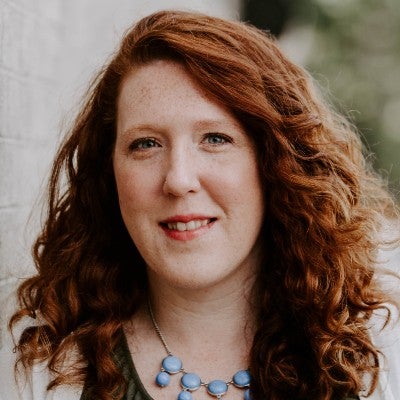Homeowners can usually pay their home insurance bill in one of two ways: through an escrow account or directly to their insurance company. However, homeowners who pay their insurer directly may have more flexibility when choosing payment schedules and methods.
Using an escrow account for home insurance
Many homeowners choose to pay their homeowners insurance and property taxes through an escrow account. An escrow account is a financial tool that allows a neutral third party to hold and distribute funds on behalf of two or more parties.
If you choose this method, your lender will add your home insurance and tax obligations to your monthly mortgage payment. When you make your payment, your lender deposits a predetermined portion into the escrow account and uses it to pay your premium or tax bills when due.
Escrow accounts can also hold funds for other purposes, such as real estate transactions, construction projects, and legal settlements.
Pros and cons of a home insurance escrow account
Pros
-
Simplifies bill payment, eliminating the need to pay home insurance (and/or taxes) separately.
-
Allows you to meet lender or lending requirements, as some lending agreements require borrowers to use an escrow account.
-
Ensures you don’t miss an insurance payment, maintaining financial protection for your home and assets.
Cons
-
Results in a larger monthly mortgage payment since your payment includes the actual mortgage's balance plus insurance costs and/or taxes.
-
Decreases cash flow control, as you are required to follow the payment schedule determined by your lender.
-
May lead to under- or overpayments, which can require payment adjustments, such as a higher mortgage bill if the cost of coverage increases. Overpayments are issued as refunds.
Paying home insurance directly
Unless your lending agreement requires you to leverage an escrow account, you can choose to pay your home insurance premiums directly to your insurer. Every insurance company is different, but most let you pay your premium by:
-
Credit card
-
Debit card
-
Bank transfer
-
Check or money order
Some insurers may also accept premium payments via online platforms like PayPal and Venmo.
Automatic payments versus manual payments
When you pay your insurer directly, you can often choose between automatic or manual payments.
Automatic payments, often called “autopay,” are automatically deducted from your account on a predetermined schedule, such as monthly or quarterly. This option minimizes the risk of missing a premium payment and may even result in a discount on your homeowners insurance.
Though there are benefits to automatic payments, they aren’t without risk. The funds must be available in the account on the day your bill is due. If the autopay withdrawal hits your bank account and the funds aren’t available, you may face an overdraft charge. Further, the insurer may cancel your policy if you don’t resolve the issue and complete your payment.
Manual payments require you to send a check or log in to your account — on the insurer's website or app — to pay your home insurance premium by a predetermined date, as specified by your policy agreement. Manual payments can provide more control over your cash flow, but missed payments can jeopardize your coverage. Fortunately, most insurance companies have a grace period for late payments.
Pros and cons of direct payments for home insurance
Pros
-
Increased control of payments, as you can often choose to make monthly, quarterly, or annual payments.
-
Potential credit rewards if you make payments with a card linked to a rewards program that entices users with cash back or the accumulation of miles or points.
-
Increased awareness of coverage costs as you make manual payments or see automatic payments deducted from your account.
Cons
-
Results in additional bill payment requirements, as opposed to making a single mortgage payment when paying insurance premiums through an escrow account.
-
Potential for missing payments, which may result in late fees or even policy cancellation.
Home insurance payment schedules
Homeowners insurance premiums are calculated on an annual basis and often billed that way. However, if you pay your insurance policy directly, you can usually select a monthly, quarterly, semiannual or annual payment schedule, though options vary by insurer.
Your insurer may charge an additional fee when you make installments on your annual premium, as with monthly or quarterly payment schedules. Conversely, insurers often issue a discount when you pay annually.
If you pay your insurance through an escrow account, your lender typically pays the insurer annually, though you’ll pay a portion of the insurance cost each month when you make your mortgage payment.
Tips for managing home insurance payments
Your home insurance premium can be a significant percentage of your housing budget. Here are some tips to help you manage the cost of coverage.
-
Budget for yearly payments. Paying your full premium at the beginning of your policy may be worth it if your insurer offers a discount. Once your premium is paid, you can begin to save for the following year.
-
Compare payment options. If you can’t pay your entire premium up front, compare available payment schedules to see how they will affect the total cost of coverage and your monthly budget.
-
Shop around for coverage. Compare home insurance quotes to ensure you get the most affordable coverage for your needs. Consider shopping around once a year and getting quotes from at least three insurers, while making sure you compare quotes for the same type and amount of coverage.
What happens if you miss a homeowners insurance payment?
Missing a home insurance payment can have serious ramifications, including policy cancellation. If your policy is canceled, you won’t be covered if your home is damaged, and you’ll lose valuable liability coverage should you or a household member be legally responsible for an individual’s injury or property damage.
Further, having an insurance lapse on your record may lead to higher premiums when you try to reinstate coverage or shop for a new policy.
Is escrow mandatory for homeowners?
Some lenders may require mortgage borrowers to have an escrow account. An escrow reduces the lender’s financial risks by ensuring you pay your taxes and maintain coverage on the property while carrying a mortgage balance. The escrow account can be used to pay home insurance premiums, property taxes, and private mortgage insurance (PMI), if applicable.
If your lender requires you to have an escrow account, it will close once you pay off the mortgage. If you wish, you can open a new escrow account to manage home insurance and property taxes, though that's not required.
How does your mortgage affect your insurance payments?
Mortgage lenders almost always require you to get home insurance (although they may refer to it as hazard insurance). Moreover, they usually want your policy to include replacement cost coverage, which will pay for your home to be repaired or replaced based on the current market costs. This contrasts with actual cash value coverage, which limits coverage to the depreciated value of your home or possessions.
Is the first year of homeowners insurance included in closing costs?
It’s common for lenders to require homebuyers to pay at least a portion of their home insurance premiums at closing. How much is needed depends on your lender and your loan terms. Some lenders require you to pay the first full year’s premiums as part of your closing costs, while others may require less.








